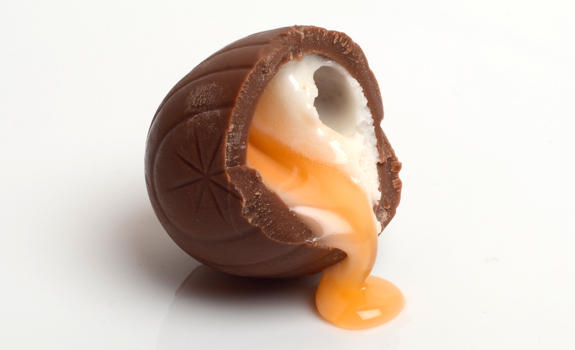The treat is synonymous with Easter and the chocolate delights that come with the celebration!
However, an outcry about this year's Creme Eggs has swarmed over social media and consumers are not happy! Cadbury is one of the best British brands out there and a brand that British people are very proud of, however when they were bought by Mondelez International (was Kraft) in 2010, a lot of people were skeptical of a great brand being taken over by an American corporation. The company was very important to the UK economy and Mondelez shut down a British factory and stopped sending Christmas chocolate tins to their retired employees.... but this was the start of many changes for Cadbury, which didn't go down well with the British public.
Any one would have thought than since then, Cadbury would be doing their upmost to regain the trust and loyalty of British consumers. However, there have been a number of shocking decisions made by the company, which sees consumers slipping further and further away from the brand they used to love....
Creme Egg Controversy
This article in the Telegraph here talks about the changes that Cadbury have made to the Creme Egg recipe which now does not use Dairy Milk chocolate in its coating, instead uses a milk chocolate which consumers argue ruins the great Creme Egg taste they know and love. The company also lowered the pack size from 6 eggs to 5, yet kept the price the same AND made the egg smaller.
Has anyone tried a creme egg this year? So disappointing. Just not the same anymore 😩
#c... http://t.co/wWHpyPSQX6 pic.twitter.com/YvsIXPVjE4
— Laura • Lola&Behold (@LolaandBehold) January 25, 2015
@CadburyUK I'm so sad not to be buying #CremeEgg anymore - do let me know if you change your mind and want my business again
— Martin HB (@hblondon) January 25, 2015
Start of the end for @cadburyuk Creme Egg - you don't mess with the chocolate! http://t.co/c0OoQXUoJk
— Andrew Barnes (@itchypaws) January 17, 2015
Chocolate coins axed
Cadbury announced at Christmas 2014, that they would no longer be selling their chocolate coins due to them no longer making profit on the product. Supermarket's own branded chocolate coins took most of the business away from Cadbury, however the consumers who love the Cadbury chocolate taste were left without their favourite Christmas stocking filler treat.
First @CadburyUK killed Chocolate Coins, now they fucking with Creme Eggs? WHY DO YOU HATE OUR HOLIDAY CHOCOLATE SO? http://t.co/l9R5vM987Y
— NEAFCY (@PNeafcy) January 12, 2015
Cadbury’s discontinues chocolate coins ahead of Christmas http://t.co/VYe03r2ysA The end of Christmas as we know it? #ChocCoinGate
— Bill Bruce (@BillFoodBev) October 29, 2014
Cutting corners (literally)
Cadbury rounded the corners on the Dairy Milk pieces in order to cut costs.... yet still charged the consumer the same price. They are clearly putting in every cost-saving measure to ensure maximum profits. This reduced the size of the bar by 4grams... when you add up all the bars of Dairy Milk they sell, this adds up to a huge saving for Cadbury! The brand put it down to the 'melt in the mouth' experience of the new shape.... consumers were having none of it!
What can Cadbury learn?
Anyone who knows anything about how to run a business and market products knows that knowing and understanding your customers' needs and wants is the number one rule and is at the core of success.
The Cadbury brand has high emotional attachment, nostalgia and links to every British person's childhood. Cadbury needs to understand that we love the brand and when a big American corporation comes in and starts messing with our Cadbury, whether that be packaging, traditions or recipes... we are going to make them pay!
Mondelez have been putting profits before consumers and eventually they need to wake up and smell the coffee!
It seems as though Cadbury has a lot of making up to do if it wants the British consumer to put Cadbury back in it's hearts as their favourite chocolate brand!
Stephanie




